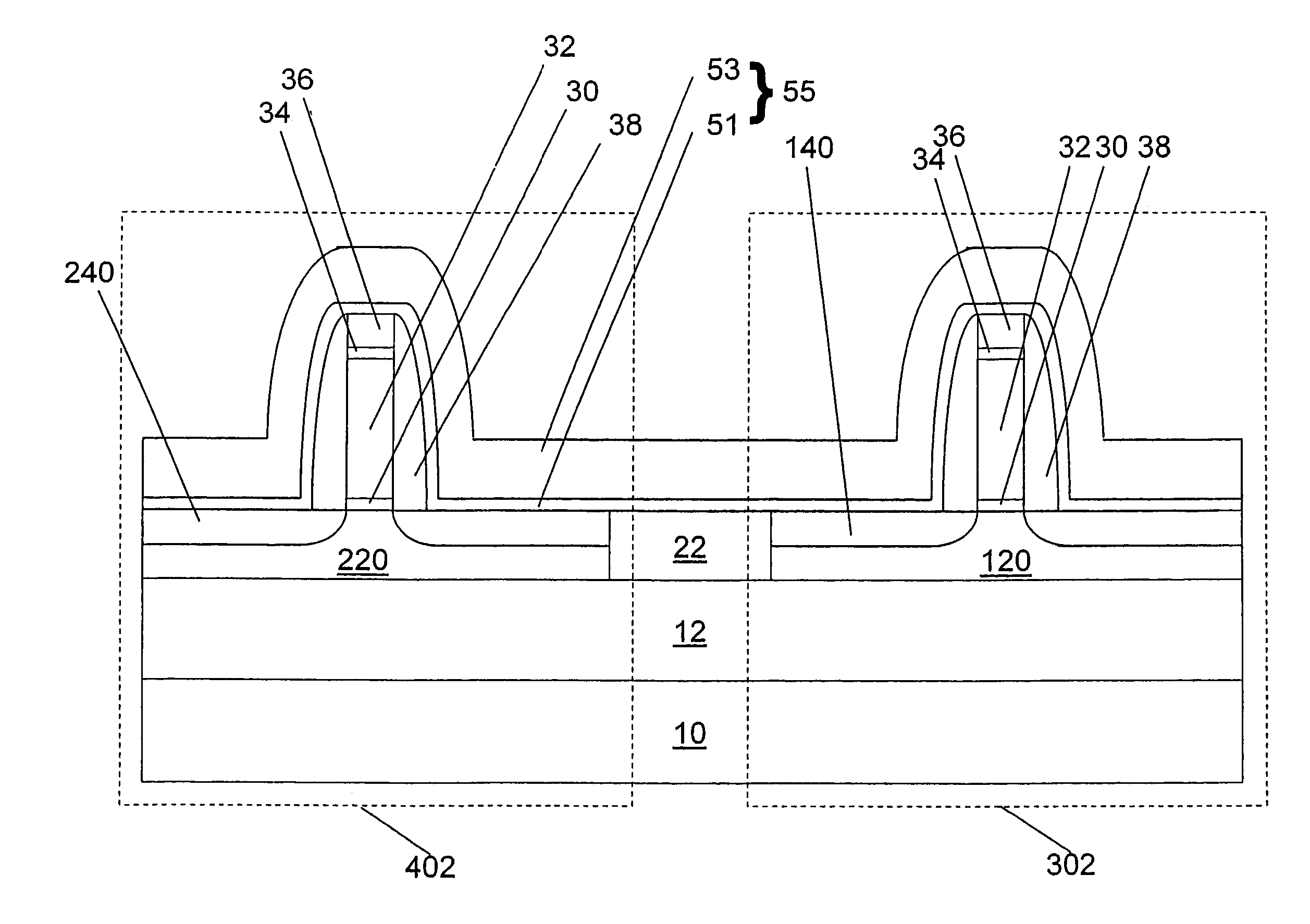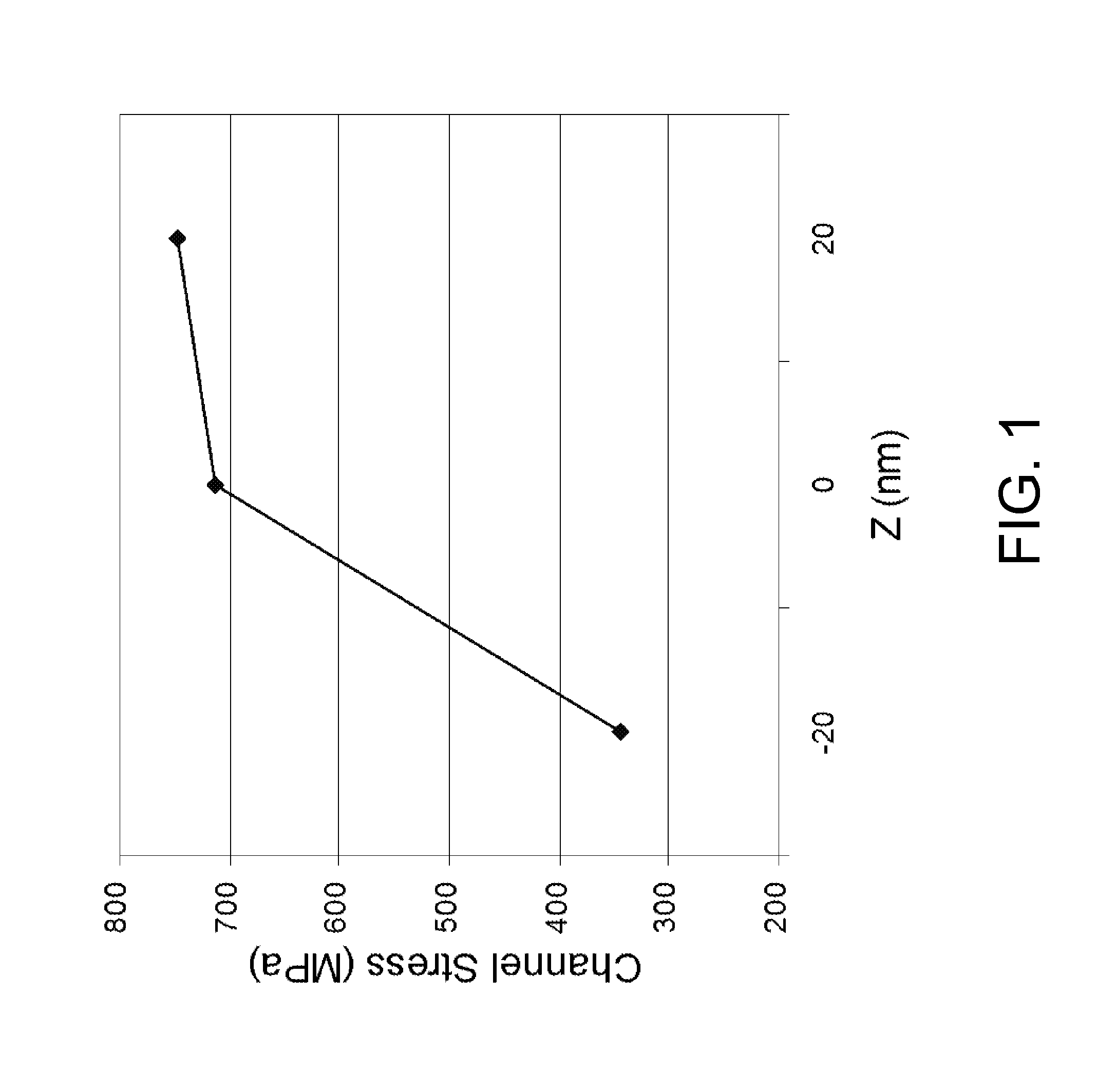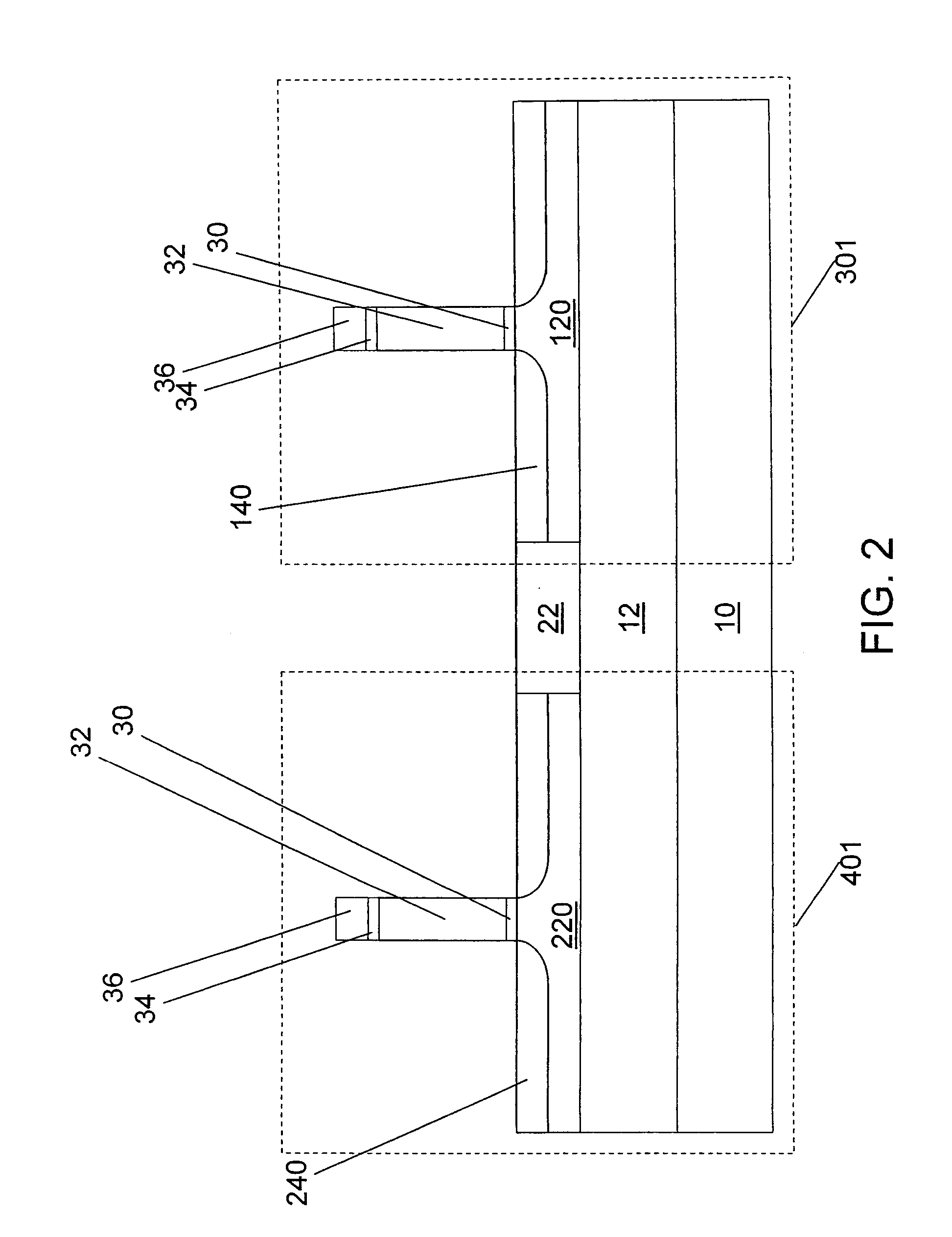Structure and method for mobility enhanced mosfets with unalloyed silicide
a technology of enhanced mobility and silicide, which is applied in the field of semiconductor devices and manufacturing methods of complementary metal oxide semiconductors (cmos) transistors, can solve the problems of similar problems encountered with silicon substitutional alloys, the general complexity of such processes remains a challenge, and the successful implementation of pfets and nfets with enhanced mobility through stress engineering on the same silicon substrate requires a complex integration of processing steps
- Summary
- Abstract
- Description
- Claims
- Application Information
AI Technical Summary
Benefits of technology
Problems solved by technology
Method used
Image
Examples
first embodiment
[0051]The present invention has twelve embodiments. Despite the high number of embodiments, however, all of these embodiments share common processes and features. Therefore, the present invention is described in detail for the Thereafter, the differences among the different embodiments of the preset invention are compared and described.
[0052]In typical CMOS processing, some areas of the surface of the semiconductor substrate are used for building PFET structures. These areas are collectively called “the PFET area” herein. Similarly, some other areas of the surface of the semiconductor substrate are used for building NFET structures. They are collectively called “the NFET area herein”. An exemplary PFET structure in the PFET area and an exemplary NFET structure in the NFET area at various stages of the manufacturing sequences are described for the description of the present invention herein.
[0053]Referring to FIGS. 2-12, the structures according to the first embodiment of the presen...
seventh embodiment
[0090]According to the present invention, the reaction of the metal 80 is controlled such that the contact formation process consumes only a portion of the N-doped Si:C alloy layer 872′ and the P-doped silicon layer. A PFET structure 711 and an NFET structure 811 at this stage is shown in FIG. 20. The body of the PFET 120, the PFET extension 144, the P-doped silicon 762, the P-doped silicon germanium alloy 762′, and the unreacted P-doped silicon layer 772 form a contiguous single crystalline structure within each area surrounded by STI 22. Likewise, the body of the NFET 220, the NFET extension 244, the N-doped silicon 862, the N-doped Si:C alloy 862′, and the unreacted N-doped silicon layer 874′ form a contiguous single crystalline structure within each area surrounded by STI 22.
[0091]According to the eighth embodiment of the present invention, the reaction of the metal 80 is controlled such that the contact formation process consumes all of the N-doped Si:C alloy layer 872′ and the...
tenth embodiment
[0094]As shown in FIG. 22, a PFET structure 908 is covered with a sixth photoresist 975 and carbon is implanted into the NFET structure 1008. This introduces carbon into the epitaxially grown silicon layer as well as into the silicon material from the substrate. The sixth photoresist 975 is then removed and the silicon substrate is subjected to an anneal process. The SPE during the anneal process produces Si:C alloy 1060′ and an Si:C layer 1070′ in the NFET structure 1008. The lack of doping in the Si:C layer 1070′ in the ninth and tenth embodiment is a new feature not found in prior embodiments. Resist 975 is removed after the SPE.
[0095]Electrical doping of the source and drain regions of the PFETs and NFETs is performed thereafter. FIG. 23 shows the resulting structures. A PFET structure 909 now contains P-doped silicon 762, P-doped silicon germanium alloy 762′, and P-doped silicon layer 772. An NFET structure 1009 contains N-doped silicon 1062, N-doped Si:C alloy 1062′, and N-dop...
PUM
| Property | Measurement | Unit |
|---|---|---|
| temperature | aaaaa | aaaaa |
| temperature | aaaaa | aaaaa |
| lattice constants | aaaaa | aaaaa |
Abstract
Description
Claims
Application Information
 Login to View More
Login to View More - R&D
- Intellectual Property
- Life Sciences
- Materials
- Tech Scout
- Unparalleled Data Quality
- Higher Quality Content
- 60% Fewer Hallucinations
Browse by: Latest US Patents, China's latest patents, Technical Efficacy Thesaurus, Application Domain, Technology Topic, Popular Technical Reports.
© 2025 PatSnap. All rights reserved.Legal|Privacy policy|Modern Slavery Act Transparency Statement|Sitemap|About US| Contact US: help@patsnap.com



